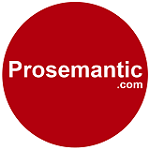Structural Equation Modeling on Data on Students' Knowledge and Interest in Entrepreneurship in Lampung
Abstract
Keywords
Full Text:
DOWNLOAD [PDF]References
Adeel, S., Daniel, A. D., & Botelho, A. (2023). The effect of entrepreneurship education on the determinants of entrepreneurial behaviour among higher education students: A multi-group analysis. Journal of Innovation & Knowledge, 8(1), 100324. https://doi.org/10.1016/j.jik.2023.100324
Ali, I. (2021). Upaya Menumbuhkembangkan Kewirausahaan di Kalangan Mahasiswa. Jurnal Mubtadiin, 7(02), 154–172. https://doi.org/10.47783/literasiologi.v7i1.272
Arioseno, R. M., Tannady, H., & Lestari, E. D. (2023). The Effect of Entrepreneurship Education on Entrepreneurial Intention With Human Capital As A Mediating Variable For Students in Tangerang. Indonesian Journal of Business Analytics, 3(2), 149–160. https://doi.org/10.55927/ijba.v3i2.3586
Bowen, N. K., & Guo, S. (2011). Structural equation modeling. Oxford University Press. https://doi.org/10.1093/acprof:oso/9780195367621.001.0001
Cui, J., Sun, J., & Bell, R. (2021). The impact of entrepreneurship education on the entrepreneurial mindset of college students in China: The mediating role of inspiration and the role of educational attributes. The International Journal of Management Education, 19(1), 100296. https://doi.org/10.1016/j.ijme.2019.04.001
Fanghui, G. (2022). Research on the role of higher education in regional economic development. Frontiers in Educational Research, 5(20). 59-62 https://doi.org/10.25236/FER.2022.052012
Friderichs, T. J., & Correa, F. M. (2022). Measuring human capital in South Africa across socioeconomic subgroups using a latent-variable approach. Social Indicators Research, 164(3), 1161–1185. https://doi.org/10.1007/s11205-022-02973-y
Guo, Y. (2022). Higher Education Development, Regional Economic Growth and Opening to the Outside World. Asian Business Research, 7(1), 45. https://doi.org/10.20849/abr.v7i1.994
Hair Jr., J. F., Howard, M. C., & Nitzl, C. (2020). Assessing measurement model quality in PLS-SEM using confirmatory composite analysis. Journal of Business Research, 109(November 2019), 101–110. https://doi.org/10.1016/j.jbusres.2019.11.069
Hidayat, F., & Veronica, A. (2022). Determination of Entrepreneurial Knowledge and Locus of Control Through The Family Environment In The Interest of Entrepreneurship Students STMB MULTI SMART Medan. International Journal of Economics (IJEC), 1(2), 315–324. https://doi.org/10.55299/ijec.v1i2.175
Ilomo, M., & Mwantimwa, K. (2023). ENTREPRENEURIAL INTENTIONS OF UNDERGRADUATE STUDENTS: THE MODERATING ROLE OF ENTREPRENEURIAL KNOWLEDGE. International Journal of Entrepreneurial Knowledge, 11(1), 14–34. https://doi.org/10.37335/ijek.v11i1.178
Kavan, B., & Goel, L. (2022). Paradigm Shift: Knowledge Workers as Digital Nodes on a Network. In Leadership Strategies for the Hybrid Workforce: Best Practices for Fostering Employee Safety and Significance (pp. 188–194). IGI Global. https://doi.org/10.4018/978-1-6684-3453-6.ch013
Laloma, A., Lefrandt, L. I. R., & Rompis, S. Y. R. (2023). Pengaruh Usia dan Tingkat Pendapatan Terhadap Potensi Kecelakaan Lalu Lintas dengan Menggunakan Stuctural Equation Modeling (SEM). Jurnal Teknik, 21(1), 102–111. https://doi.org/10.37031/jt.v21i1.348
Malek, M. S., & Bhatt, V. (2023). Examine the comparison of CSFs for public and private sector’s stakeholders: a SEM approach towards PPP in Indian road sector. International Journal of Construction Management, 23(13), 2239–2248. https://doi.org/10.1080/15623599.2022.2049490
Musah, M. B., Tahir, L. M., Ali, H. M., Al-Hudawi, S. H. V, Issah, M., Farah, A. M., Abdallah, A. K., & Kamil, N. M. (2023). Testing the validity of academic staff performance predictors and their effects on workforce performance. International Journal of Evaluation and Research in Education, 2(12), 941–955. https://doi.org/10.11591/ijere.v12i2.24230
Setyastanto, A. M., Tampubolon, E. G., & Iramdan, I. (2022). The effect of Entrepreneurship Knowledge on Students’ Entrepreneurship Interest. FOCUS, 3(2), 118–121. https://doi.org/10.37010/fcs.v3i2.847
Shrestha, N. (2021). Factor analysis as a tool for survey analysis. American Journal of Applied Mathematics and Statistics, 9(1), 4–11. https://doi.org/10.12691/ajams-9-1-2
Sobaih, A. E. E., & Elshaer, I. A. (2022). Structural Equation Modeling-Based Multi-Group Analysis: Examining the Role of Gender in the Link beutween Entrepreneurship Orientation and Entrepreneurial Intention. Mathematics, 10(20), 3719. https://doi.org/10.3390/math10203719
Sovey, S., Osman, K., & Mohd-Matore, M. E. (2022). Exploratory and Confirmatory Factor Analysis for Disposition Levels of Computational Thinking Instrument among Secondary School Students. European Journal of Educational Research, 11(2), 639–652. https://doi.org/10.12973/eu-jer.11.2.639
Svetina, D., Rutkowski, L., & Rutkowski, D. (2020). Multiple-group invariance with categorical outcomes using updated guidelines: an illustration using M plus and the lavaan/semtools packages. Structural Equation Modeling: A Multidisciplinary Journal, 27(1), 111–130. https://doi.org/10.1080/10705511.2019.1602776
Yacine, M. (2021). Entrepreneurship Learning in Higher Education: Practice-based and Action Learning Approaches. Sheffield Hallam University (United Kingdom). https://shura.shu.ac.uk/31790/1/Yacine_2022_DBA_EntrepreneurshipLearningIn.pdf
Yilmaz, V. (2023). Decomposition of effects for the structural model consisting of two mediating latent variables: an example of entrepreneurial intention. Journal of Modelling in Management, 18(3), 973–992. https://doi.org/10.1108/JM2-01-2022-0008
DOI: https://doi.org/10.31764/jtam.v9i1.26557
Refbacks
- There are currently no refbacks.
Copyright (c) 2025 Sangidatus Sholiha, Ira Vahlia, Wardhani Utami Dewi

This work is licensed under a Creative Commons Attribution-ShareAlike 4.0 International License.
_______________________________________________
JTAM already indexing:
_______________________________________________
2.jpg) | JTAM (Jurnal Teori dan Aplikasi Matematika) |
_______________________________________________
_______________________________________________
JTAM (Jurnal Teori dan Aplikasi Matematika) Editorial Office:















.JPG)








.JPG)
.JPG)
.JPG)
.JPG)




